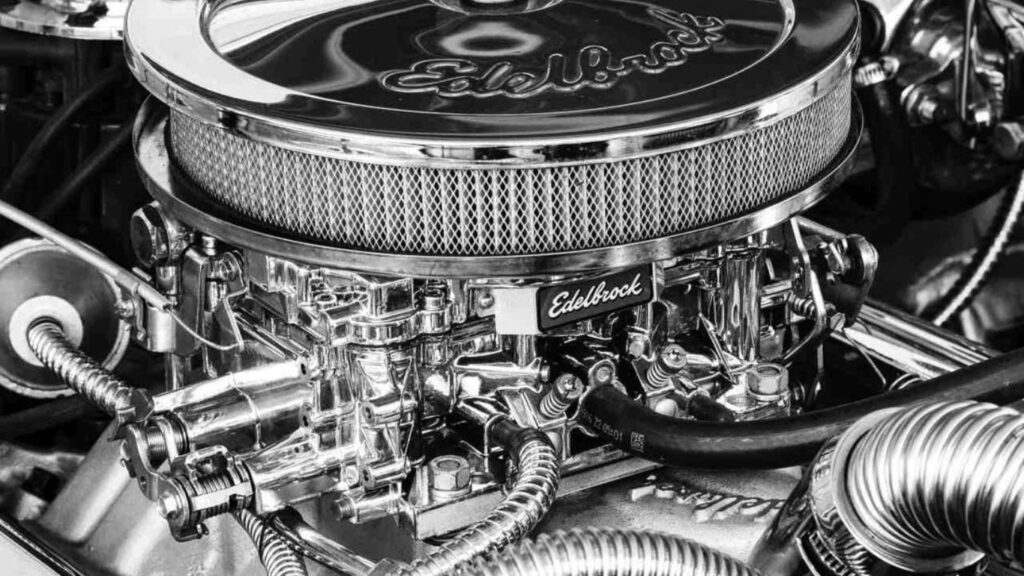Car enthusiasts often dream of boosting their vehicle’s performance. The thrill of acceleration and the rush of speed are undeniably exciting. However, making a car faster isn’t just about raw power. It involves a comprehensive approach. This guide will explore various methods to enhance your car’s speed and performance.
From basic maintenance to advanced modifications, we’ll cover it all. Safety and responsibility are crucial when increasing a car’s capabilities. We’ll also discuss the importance of driving within legal limits. Whether you’re a seasoned gearhead or a curious novice, this guide has something for everyone.
Understanding the Mechanics of Speed
Speed is more than just pressing the gas pedal. It’s a complex interplay of various factors. The engine’s power output is fundamental to a car’s speed. Torque and horsepower work together to propel the vehicle forward.
Transmission efficiency plays a crucial role in transferring power to the wheels. Gear ratios affect acceleration and top speed. Aerodynamics influence how easily a car cuts through the air. Less air resistance means higher potential speeds. Weight is another critical factor in a car’s performance.
Lighter vehicles generally accelerate faster and handle better. The suspension system affects stability at high speeds. Proper alignment and balance contribute to overall performance. Understanding these elements is key to improving your car’s speed effectively.
Basic Maintenance for Faster Performance
Regular maintenance is the foundation of a high-performing vehicle. Clean air filters allow better airflow to the engine. This improves combustion efficiency and power output. Fresh oil reduces friction in the engine, enhancing performance.
Proper tire inflation ensures optimal contact with the road. This improves traction and handling. Regular wheel alignments prevent unnecessary drag. Balanced wheels contribute to smoother rides at high speeds. Brake maintenance is crucial for both performance and safety.
Clean fuel injectors ensure efficient fuel delivery to the engine. Spark plug replacement can improve ignition efficiency. A well-maintained cooling system prevents overheating during high-performance driving.
- Check and replace air filters regularly
- Change oil and oil filters as recommended
- Maintain proper tire pressure and alignment
- Keep brakes in top condition
- Clean or replace fuel injectors as needed
READ THIS BLOG : China’s Cryptocurrency Ban: A Comprehensive Guide
Upgrading Your Engine and Transmission

Engine upgrades can significantly boost a car’s speed. Installing a cold air intake increases oxygen flow to the engine. This can result in more power and better fuel efficiency. Upgrading the exhaust system reduces back pressure. This allows the engine to breathe more freely. Performance chips or ECU tuning can optimize engine parameters.
This often results in increased horsepower and torque. Forced induction systems like turbochargers or superchargers dramatically increase power output. Upgrading the fuel system ensures adequate fuel supply for increased power. Strengthening internal engine components allows for higher RPMs.
Transmission upgrades can improve power delivery to the wheels. A high-performance clutch can handle increased engine power. Shorter gear ratios can improve acceleration. However, they may reduce top speed. Differential upgrades can improve traction and power distribution.
Enhancing Aerodynamics and Reducing Weight
Aerodynamic improvements can significantly increase a car’s top speed. Front air dams reduce air flowing under the car. This decreases lift and improves stability. Rear spoilers or wings can increase downforce. This improves traction at high speeds.
Side skirts smooth airflow along the car’s flanks. Streamlined mirrors and antenna reduce drag. Weight reduction is another effective way to improve performance. Removing unnecessary interior components can shed significant weight. Replacing heavy body panels with lightweight alternatives is effective.
Carbon fiber parts are popular for their strength and light weight. Lighter wheels reduce unsprung weight, improving handling and acceleration. A lighter flywheel can make the engine more responsive.
- Install a front air dam or splitter
- Add a rear spoiler or wing
- Use lightweight body panels and components
- Remove unnecessary interior items
- Upgrade to lighter wheels
Tuning and Modifying Your Vehicle
Professional tuning can unlock your car’s hidden potential. Dyno tuning allows precise adjustment of engine parameters. This ensures optimal performance across the RPM range. Adjusting the air/fuel mixture can improve power and efficiency.

Ignition timing adjustments can increase power output. Suspension tuning is crucial for handling at high speeds. Stiffer springs and shocks can improve cornering ability. Lowering the car’s center of gravity enhances stability. Performance brake upgrades improve stopping power. This is essential when increasing a car’s speed capabilities.
Lightweight flywheels can improve engine responsiveness. Limited-slip differentials enhance traction during acceleration. Upgraded cooling systems prevent overheating during high-performance driving.
ALSO READ THIS : The Hotel Vixen Season 2 Episode 5 Pool Pass: A Comprehensive Guide
Tips for Safe and Responsible Driving
Increased speed capabilities require increased driver responsibility. Always obey traffic laws and speed limits on public roads. High-speed driving should only be done on closed courses or tracks. Proper driver training is essential for handling high-performance vehicles. Maintain heightened awareness of your surroundings when driving fast.
Leave ample distance between your car and others on the road. Regular brake and tire inspections are crucial for safety. Wear appropriate safety gear when participating in high-speed events. Be aware of your car’s limitations and your own driving skills. Never drive under the influence of alcohol or drugs. Respect other drivers and pedestrians at all times.
Frequently Asked Questions
Is it legal to modify my car for increased speed?
Many modifications are legal, but regulations vary. Always check local laws before modifying your vehicle.
Will improving my car’s speed void its warranty?
Some modifications can void parts of your warranty. Consult your vehicle’s warranty terms before making changes.
What’s the most cost-effective way to increase my car’s speed?
Basic maintenance and weight reduction are often the most cost-effective methods for improving performance.
Do I need special insurance for a high-performance car?
It’s advisable to inform your insurance company about significant modifications. Some may require special coverage.
How often should I service a high-performance car?
High-performance vehicles often require more frequent servicing. Follow manufacturer guidelines and consider your driving habits.
Conclusion
Improving a car’s speed is a rewarding endeavor for automotive enthusiasts. It combines mechanical knowledge, creativity, and a passion for performance. This guide has covered various aspects of enhancing vehicle speed. From basic maintenance to advanced modifications, there are many ways to boost performance.
Remember that increasing a car’s capabilities also increases the driver’s responsibility. Safety should always be the top priority when pursuing higher speeds. Enjoy the process of improving your car’s performance. The journey of enhancing your vehicle can be as thrilling as the speed itself.
Whether you’re looking for better acceleration or a higher top speed, there’s always room for improvement. As you make changes, take time to appreciate the incremental gains in performance. Finally, always drive within your limits and respect the power at your disposal. A faster car can be exhilarating, but it must be handled with care and respect.

Brook with 5 years in celebrity styling. Transforms A-list looks into wearable trends.
Expert in red carpet glamour and everyday chic for the stars.





